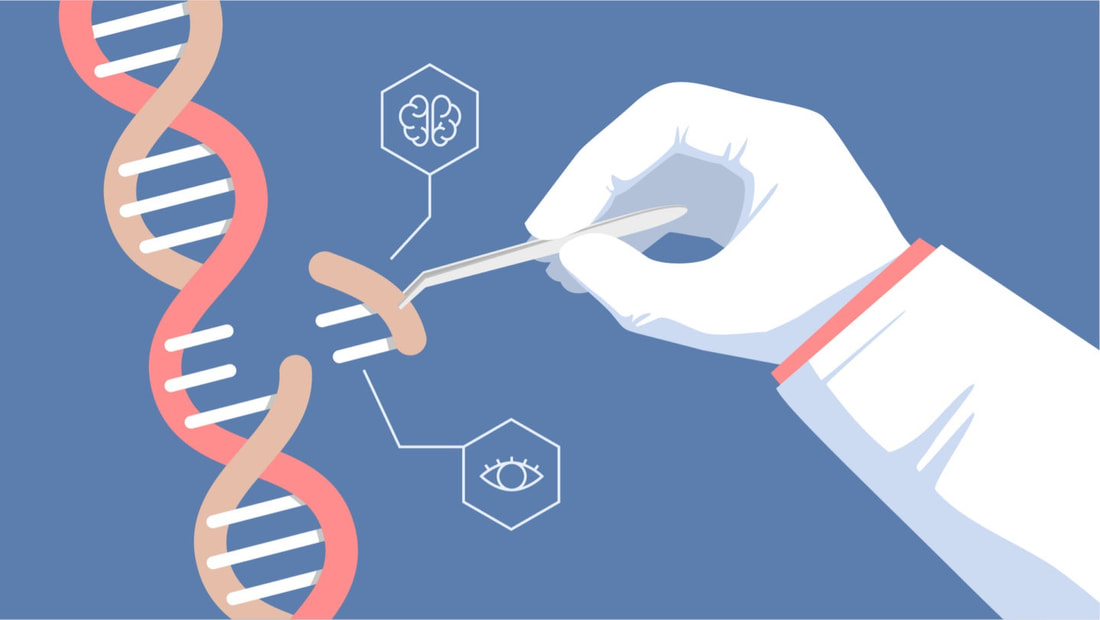|
By: L. Mizne Picture from: https://skilloxide.com/blog-genetic-engineering.html Wheat contains gluten. Apples go brown when you leave them out. Some strawberries are sour. These are facts we deem as unchangeable because they have remained the same for all of our lives. But what if we there was a future where these “unchangeable facts” could be altered? And what if we were already there?
Genetic engineering is definitely not a new term. In fact, it’s been around for almost 50 years, starting in 1973, with the first successful experiments involving recombination of DNA in E. coli having been conducted by biochemists Stanley Cohen and Herbert Boyer. Since then, the methods used to modify genes have been under constant development, with new advancements being made each day in the field, including gene cloning, DNA analysis, sequencing, and others. These methods have always been restricted and difficult to operate, which is where Dr. Jennifer Doudna comes in, a scientist credited with co-inventing CRISPR technology. This new technology, commonly known as CRISPR (Clustered Regularly Interspaced Short Palindromic Repeats), was first used commercially in 2008 to improve the immunity of bacterial cultures against viruses, and is now being researched for implementation in almost all aspects of our lives. It allows for a much easier, much more accessible approach to genetic modification and has caused the amount of research into this area of medicine to explode, leading to revolutionary discoveries. Let’s look at an example: apples brown after being cut. This is due to an enzyme called PPO (polyphenol oxidase) which is kept in a cellular compartment in the fruit before it is eaten. However, once cut or bitten into, this cellular compartment is disrupted, allowing the enzyme to mix with oxygen and polyphenols, causing the apple to brown. Many consumers throw away these browning apples, as they look unappealing and lose their nutritional value when oxidized. Using CRISPR technology, scientists have managed to remove PPO from apples, creating apples that do not brown, namely “Arctic Apples”. These have been researched for years and received FDA approval a few years ago, though they have not reached most shops yet as apple trees take several years to grow and bear fruit. Naturally, as with other biological advances, many people are against the consumption of this food because, though they have been found to have the same effects on our bodies as traditional apples, it will take a while to tell whether there are long-term effects. Genetic modification is also applicable to other aspects of human development, such as medicine. Sickle cell anaemia, for instance, affects millions of people globally. It is a disease where red blood cells are sickle-shaped instead of round, and cannot properly carry oxygen through the body, occasionally causing the blockage of arteries, which could be fatal. In 2021, after years of research, a CRISPR-based treatment for this disease was approved by the FDA for human trials. Through this new advancement, researchers may find a more affordable and accessible method to treat the disease, which could transform the lives of those who suffer from it. Of course, each one of these advancements is followed by thousands of ethical implications and concerns posed not only by the researchers themselves, but also by the general public. Many believe this technology should be accessible to everyone, no matter its application, while some find that each circumstance should be dealt with individually. Others are against the use of the technology in its entirety, finding it unethical to modify genes at all. The possibilities of what can be done with CRISPR are seemingly endless, but ethical implications and long-term consequences must be considered before utilizing the tool, regardless of whether it modifies food, medicine, or something entirely different. With this technology reaching such unimaginable heights, there is no way to tell what the world will look like a decade from now, all we do know is that those “unchangeable facts” we were so sure of are not so inalterable anymore. Sources: https://www.livescience.com/59602-crispr-advances-gene-editing-field.html https://www.livescience.com/58790-crispr-explained.html https://www.synthego.com/blog/crispr-agriculture-foods https://www.britannica.com/science/genetic-engineering/Process-and-techniques https://nikomccarty.medium.com/almost-everything-you-should-know-about-crispr-how-it-works-top-applications-and-how-to-use-it-61e27b04bea6 https://sitn.hms.harvard.edu/flash/2018/arctic-apples-fresh-new-take-genetic-engineering/ https://news.berkeley.edu/2021/03/30/fda-approves-first-test-of-crispr-to-correct-genetic-defect-causing-sickle-cell-disease/#:~:text=Other%20trials%20have%20successfully%20used,symptoms%20of%20sickle%20cell%20disease.
0 Comments
Leave a Reply. |
Categories
All
Archives
June 2024
|

